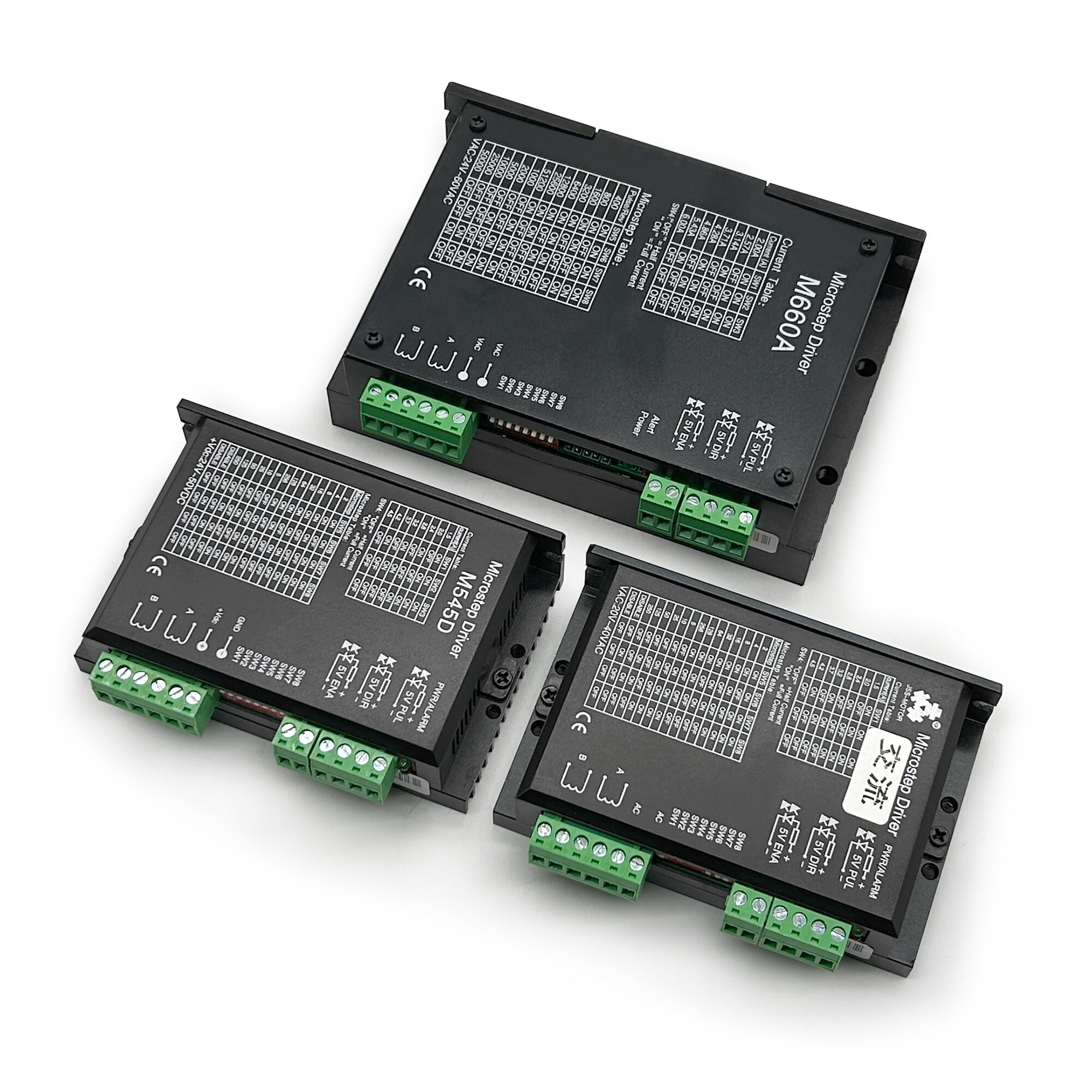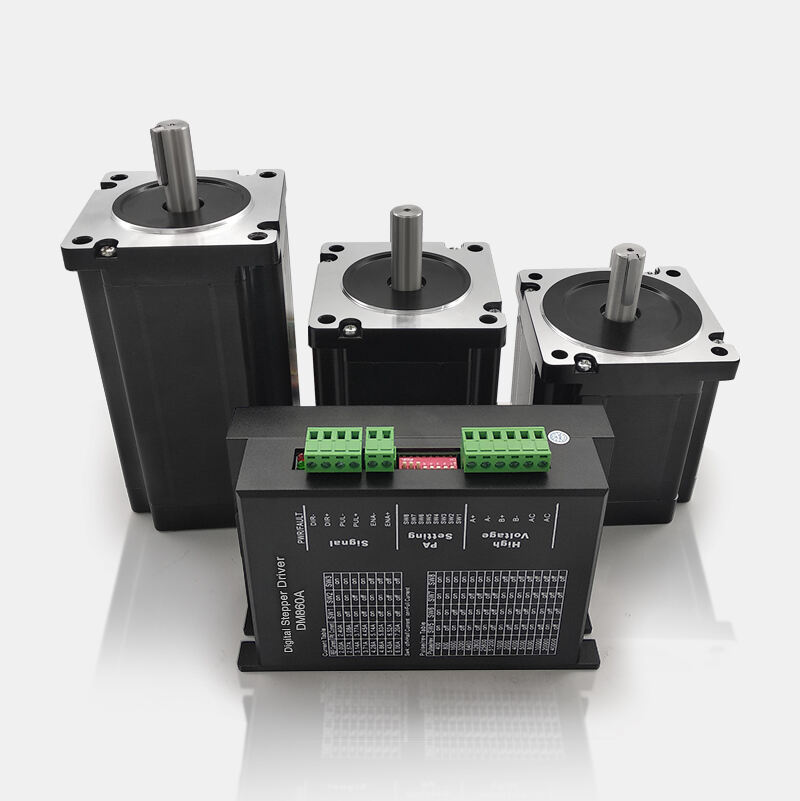Understanding Stepper Driver Voltage Requirements and Thermal Management
Stepper drivers are essential components in motion control systems, and their voltage capabilities significantly impact performance. When considering whether a stepper driver can operate at 24V without additional heat sinking, several factors come into play. The relationship between voltage, current, and heat generation determines the need for thermal management solutions.
Modern stepper drivers are designed with increasingly efficient power management systems, but operating at higher voltages like 24V introduces specific challenges. Understanding these challenges and the solutions available is crucial for maintaining reliable system operation and preventing thermal damage.
Core Components of Stepper Driver Operation
Power Stage Design and Heat Generation
The power stage of a stepper driver contains MOSFETs that handle current switching. When operating at 24V, these components experience switching losses and resistive losses that contribute to heat generation. The efficiency of the power stage design directly influences how much heat is produced during operation.
Modern stepper drivers incorporate advanced MOSFET technology with lower RDS(on) values, reducing heat generation even at higher voltages. This improvement in component efficiency has made it possible for many drivers to operate at 24V with minimal thermal concerns.
Current Control Mechanisms
Stepper drivers use various current control methods to regulate motor current. At 24V operation, the current control circuitry must work harder to maintain precise current levels, which can lead to additional heat generation. Advanced current control algorithms help minimize these thermal effects.
The implementation of intelligent current regulation features allows stepper drivers to optimize power delivery while minimizing heat production. This becomes particularly important when operating at higher voltages without supplementary cooling.

Thermal Considerations for 24V Operation
Natural Cooling Capabilities
The baseline thermal management of a stepper driver relies on natural convection cooling through its package design. At 24V operation, the effectiveness of natural cooling depends on factors such as ambient temperature, PCB layout, and driver mounting orientation.
Most modern stepper drivers incorporate thermal spreading techniques in their PCB design, utilizing copper planes and optimized component placement to enhance natural heat dissipation. This built-in thermal management can often be sufficient for 24V operation in many applications.
Thermal Protection Features
Advanced stepper drivers include integrated thermal protection mechanisms that monitor operating temperature. These features prevent damage by reducing current or shutting down the driver if temperature limits are exceeded, particularly important when running at 24V without additional cooling.
Understanding the thermal protection thresholds and behavior is crucial for determining whether extra heat sinking is necessary. Many drivers can maintain safe operation at 24V by intelligently managing their thermal state.
Application-Specific Requirements
Duty Cycle Impact
The operational duty cycle significantly influences heat generation in stepper drivers. Applications with continuous operation at 24V generate more heat than those with intermittent use. Careful evaluation of the duty cycle helps determine cooling requirements.
For applications with high duty cycles, even efficient drivers may require additional thermal management when operating at 24V. However, many applications with moderate duty cycles can function reliably without extra heat sinking.
Environmental Factors
Ambient temperature and airflow conditions play crucial roles in thermal management. Enclosed spaces with limited ventilation may necessitate additional cooling even for efficiently designed stepper drivers operating at 24V.
Consider the installation environment's thermal characteristics when evaluating the need for heat sinking. Open installations with good air circulation often provide sufficient cooling for 24V operation.
Optimizing Performance at 24V
Current Setting Optimization
Proper current settings help minimize heat generation while maintaining required torque output. Operating at 24V allows for higher speed operation, but careful current adjustment prevents excessive heat production.
Many applications can achieve optimal performance by fine-tuning current settings rather than adding heat sinking. This approach maintains efficiency while ensuring thermal stability.
Installation Best Practices
Proper mounting and thermal interface considerations can enhance natural cooling effectiveness. Simple measures like maintaining adequate spacing between components and ensuring good thermal contact with mounting surfaces often eliminate the need for additional heat sinking.
Following manufacturer guidelines for installation and maintaining clean, dust-free conditions helps maximize the driver's natural cooling capabilities at 24V operation.
Frequently Asked Questions
How does operating voltage affect stepper driver heat generation?
Higher operating voltages like 24V can increase heat generation due to increased switching losses and power dissipation in the driver's components. However, modern stepper drivers are designed to handle these conditions efficiently through advanced thermal management features and improved component selection.
What signs indicate a stepper driver needs additional cooling?
Key indicators include frequent thermal shutdown events, decreased performance at high temperatures, and inconsistent motor operation. Regular monitoring of driver temperature and performance can help identify when additional cooling measures might be necessary.
Can microstepping settings impact thermal performance at 24V?
Yes, higher microstepping resolutions can affect heat generation due to more frequent switching operations. However, modern drivers are designed to handle this efficiently, and proper current settings can help maintain thermal stability even with high microstepping settings at 24V operation.
How long can a stepper driver operate continuously at 24V?
The continuous operation time depends on various factors including ambient temperature, load conditions, and driver specifications. Many modern stepper drivers can operate indefinitely at 24V without additional cooling, provided they are used within their rated specifications and in appropriate environmental conditions.

